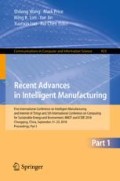Abstract
The optimization of an individual component usually happens in isolation of the components it will interface with or be surrounded by in an assembly. This means that when the optimized components are assembled together fit issues can occur. This paper presents a CAD-based optimization framework, which uses constraints imposed by the adjacent or surrounding components in the CAD model product assembly, to define the limits of the packaging space for the component being optimized. This is important in industrial workflows, where unwanted interference is costly to resolve. The gradient-based optimization framework presented uses the parameters defining the features in a feature-based CAD model as design variables. The two main benefits of this framework are: (1) the optimized geometry is available as a CAD model and can be easily used in the manufacturing stages, and (2) the resulting manufactured object should be able to be assembled with other components during the assembly process. The framework is demonstrated for the optimization of 2D and 3D parametric models created in CATIA V5.
Access this chapter
Tax calculation will be finalised at checkout
Purchases are for personal use only
References
Helgason, E., Krajnovic, S.: Aerodynamic shape optimization of a pipe using the adjoint method. In: ASME International Mechanical Engineering Congress & Exposition, 9–15 November 2012
Walther, B., Nadarajah, S.: Constrained adjoint-based aerodynamic shape optimization of a single-stage transonic compressor. J. Turbomach. 135, 021017 (2013)
Kontoleontos, E., Papoutsis-Kiachagias, E., et al.: Adjoint-based constrained topology optimization for viscous flows, including heat transfer. Eng. Optim. 45, 941–961 (2013)
Xu, S., Radford, D., et al.: CAD-based adjoint shape optimisation of a one-stage turbine with geometric constraints. ASME Turbo Expo GT2015-42237 (2015)
Chang, K., Silva, J., et al.: Concurrent design and manufacturing for mechanical systems. Concurrent Eng. 7, 290–308 (1999)
Immonen, E.: 2D shape optimization under proximity constraints by CFD and response surface methodology. Appl. Math. Model. 41, 508–529 (2017)
Ahuja, N., Chien, R.T., et al.: Interference detection and collision avoidance among three dimensional objects. In: AAAI-1980 Proceedings, pp. 44–48 (1980)
Pan, C., Smith, S.S., et al.: Determining interference between parts in CAD STEP files for automatic assembly planning. J. Comput. Inf. Sci. Eng. 5, 56–62 (2005)
Zubairi, M.S., Robinson, T.T., et al.: A sensitivity approach for eliminating clashes from computer aided design model assemblies. J. Comput. Inf. Sci. Eng. 14, 031002 (2014)
Karpouzas, G.K., Papoutsis-Kiachagias, E.M., et al.: Adjoint optimization for vehicle external aerodynamics. Int. J. Autom. Eng. 7, 1–7 (2016)
Mader, C.A., Martins, J.R.A., et al.: Adjoint: an approach for the rapid development of discrete adjoint solvers. AIAA J. 46, 863–873 (2008)
Roth, R., Ulbrich, S.: A discrete adjoint approach for the optimization of unsteady turbulent flows. Flow Turbul. Combust. 90, 763–783 (2013)
Agarwal, D., Robinson, T.T., et al.: Parametric design velocity computation for CAD-based design optimization using adjoint methods. Eng. Comput. 34, 225–239 (2018)
Othmer, C.: Adjoint methods for car aerodynamics. J. Math. Ind. 4, 1–23 (2014)
Acknowledgments
This work has been conducted within the IODA project (http://ioda.sems.qmul.ac.uk), funded by the European Union HORIZON 2020 Framework Programme for Research and Innovation under Grant Agreement No. 642959.
Author information
Authors and Affiliations
Corresponding author
Editor information
Editors and Affiliations
Rights and permissions
Copyright information
© 2018 Springer Nature Singapore Pte Ltd.
About this paper
Cite this paper
Agarwal, D., Robinson, T.T., Armstrong, C.G. (2018). A CAD Based Framework for Optimizing Performance While Ensuring Assembly Fit. In: Wang, S., Price, M., Lim, M., Jin, Y., Luo, Y., Chen, R. (eds) Recent Advances in Intelligent Manufacturing . ICSEE IMIOT 2018 2018. Communications in Computer and Information Science, vol 923. Springer, Singapore. https://doi.org/10.1007/978-981-13-2396-6_7
Download citation
DOI: https://doi.org/10.1007/978-981-13-2396-6_7
Published:
Publisher Name: Springer, Singapore
Print ISBN: 978-981-13-2395-9
Online ISBN: 978-981-13-2396-6
eBook Packages: Computer ScienceComputer Science (R0)

